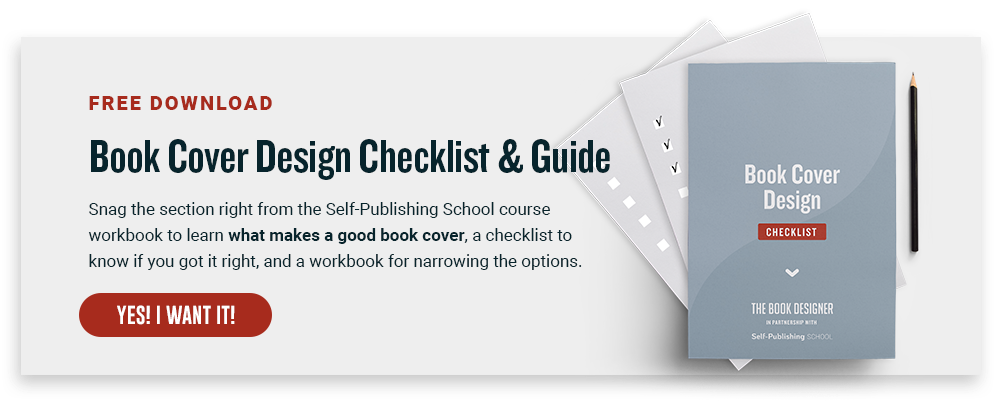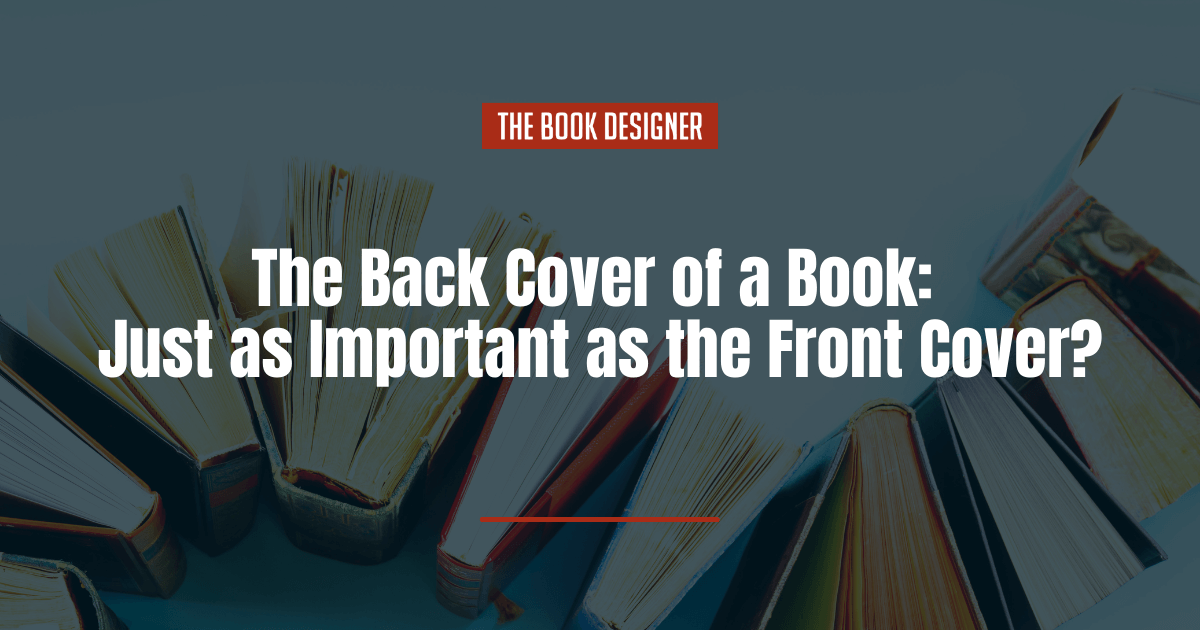Does the design of the back cover of a book really matter?
Since the front cover of a book is usually the first thing a reader sees, there’s often a heavy focus on making sure that the front cover stands out, “pops,” does cartwheels, and jumps through as many hoops as necessary to get noticed.
Unfortunately, book back covers often get the short end of the stick with only a focus on the essentials:
- the tagline
- blurb
- author bio
- testimonials
- publisher details
- barcode information
This information is useful and essential, but there’s some flexibility in how and where these details are placed, and depending on how creative your back book cover design is, sometimes you can skip the back cover copy altogether.
Below we’ll take a closer look at the parts that make up a back book cover, the importance of great design, and when and if you should break design rules to create a better book.
Here’s everything you need to know about designing the back cover of a book:
Why Does the Back Cover of a Book Matter?
The back cover of a book is the extension of the front cover and spine, but the three are sometimes disjointed as if the front cover is one book and the back cover is another. When a potential reader picks up your book and flips it over to read the summary, there’s only a single opportunity to pull them in: with words. But, when the book’s back cover design creates an atmosphere that pulls the reader in, the odds begin to stack in your favor that they’ll make it to page one.
With over 4 million books published in 2022, authors are facing a new set of challenges in a flooded book market.
Quality and creativity, not to mention a great story, are the most important differentiators from the sea of sameness that plagues virtual and brick-and-mortar bookshelves everywhere.

What Are the Parts of a Book’s Back Cover?
The Tagline and Blurb
Similar to a company tagline, a book’s tagline is a sentence or two that piques your interest and gets you to continue reading. It’s the statement that tells you to prepare yourself for what is to come. It is designed to get you to keep reading. The tagline is usually in a larger, bold font above the blurb.
The blurb, on the other hand, is the teaser that sets the stage for what’s on the inside of the book. It can be a plot summary, dialogue between characters, or a conversation with the reader.
Fiction vs. Nonfiction
In fiction, taglines and blurbs are centered around the characters and the book’s plot. In nonfiction, the tagline and blurb focus on what problem the book provides a solution to or what new or interesting information will be gleaned from the content.
Author Bio
Author bios are third-person accounts of an author’s background. Bios are a great way to share pertinent information that will endear readers to the author by establishing trust.
Fiction vs. Nonfiction
Whether fiction or nonfiction, an author’s bio offers details about the author that the author wants to share. This can include biographical information, honors and awards, education, work history, the names of books written, or a combination of them all. Many bios will include website details and a photo.
Testimonials
Testimonials are book reviews from first readers that are added to the cover for social proof. Only the best reviews or reviews from prominent sources are placed on the cover.
Fiction vs. Nonfiction
In fiction, testimonials are usually about the story, the characters, and the feelings the book evoked. Nonfiction testimonials center around the quality of the information shared and in what ways it helped the reader.
Publisher Details
Publisher details can vary but they typically include the publisher’s name, website address, colophon (logo), and sometimes additional contact information.
Fiction vs. Nonfiction
The publisher information is the same for both fiction and nonfiction.
Book Barcode
A barcode is a scannable set of black bars in a white box located in the bottom right corner of the back cover of a book. Each barcode represents global book information including the ISBN, publisher information, book title, and weight, and can include additional information like the category and price.
How Can You Optimize the Book’s Back Cover for the Greatest Impact?
The design of the back cover of a book is not just about the placement of the book’s details like the blurb and author bio. It also includes the front cover and making sure everything flows between the two sides seamlessly.
Designing the entire cover (front, back, and spine) as a single unit is an opportunity that many authors overlook. When you open up a book, turn it upside up, and look at the entire cover as a unit, does it tell a story?
When to Break Design Rules
Once you have a complete cover story in mind that includes all of the elements from imagery and typography to content details and where the words will be placed, you have the flexibility to consider breaking the rules. Do you have to include a blurb? A testimonial or tagline? What works best for your book?
When you understand the basic rules of book design and the expectations of your genre, you are in a better position to make calculated adjustments that can improve how the cover engages with your reader.
Within genres there are specific design elements that are expected, just as there are certain tropes expected in a work of fiction. These should remain. However, there are many ways to interpret those elements that can make a book’s cover stand out to potential readers.
Here are a couple of examples (spines not included).

Categories: Short Story Literary Criticism, Humorous American Literature, American Fiction Anthologies
Notes: No author bio. The design element of the mayfly is carried over to the back book cover to include the adult mayfly’s profile which contains the tagline and the larva that divides the testimonials. A great use of design elements while staying true to the category.

Category: Inspirational journal
Notes: From the book designer’s website:
This cover design is all about sparking creativity with just the words on the page, which is exactly what this book is about. It helps writers out of creative blocks, and even helps them get going when they have no idea where to start.
From the cover design to the story, everything should meld together. For example, when a reader of the romance genre sees your cover, they should know that it’s a romance novel even if you take liberties to make the cover stand out.
Final thoughts
The book game is changing. It can sometimes feel like a race to the finish line where a book is only the means to an end, rather than the book being the prize.
You can’t single-handedly outpace the flood of books into the market or the competition that ensues, but you can create an amazing book with an amazing cover that floats to the top for all eyes to see.



